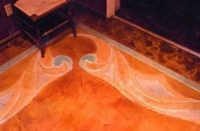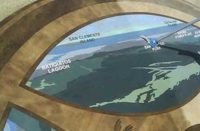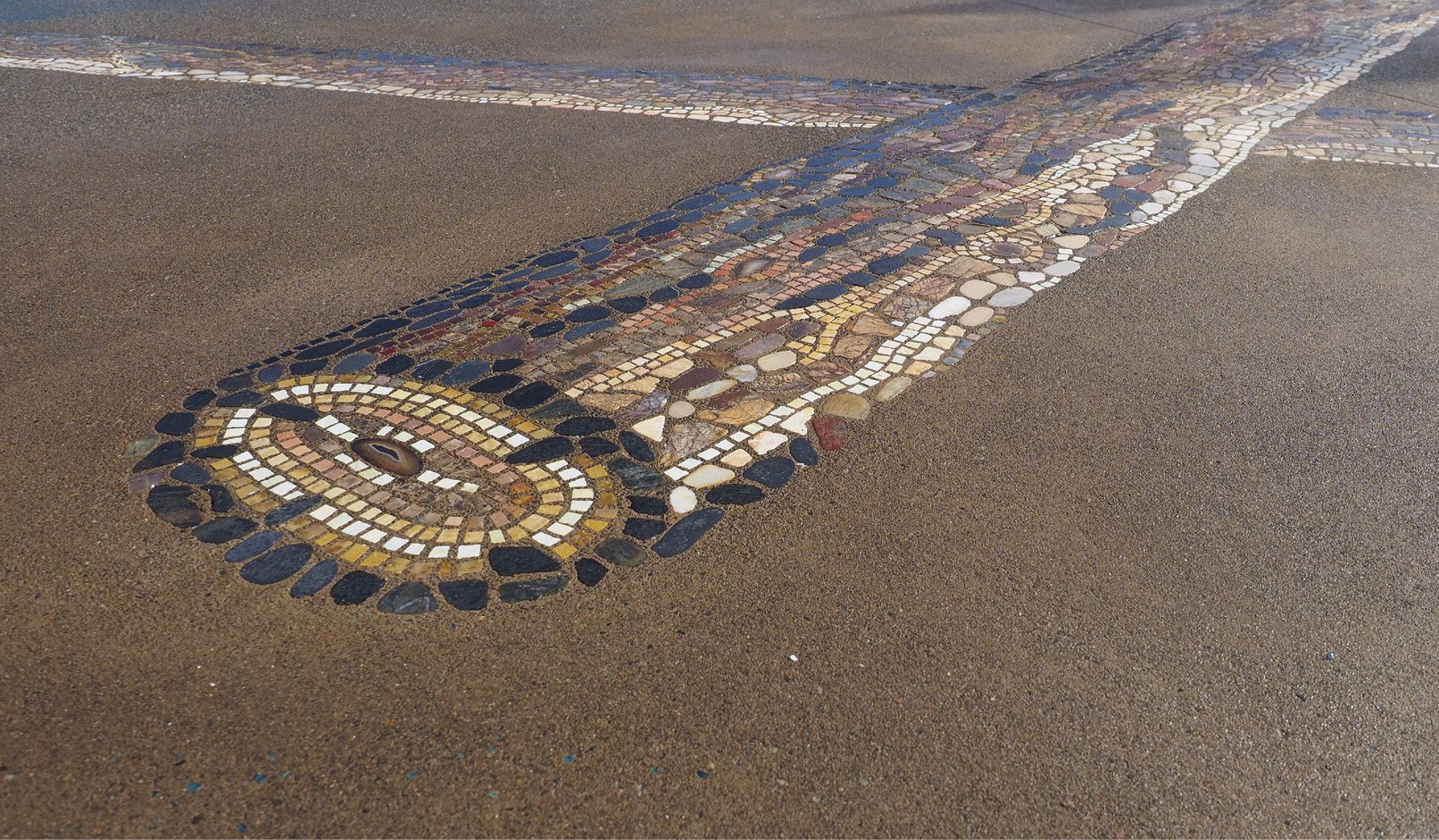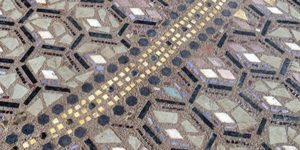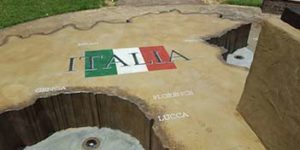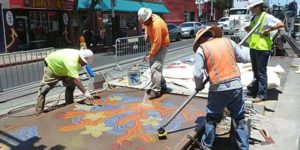Amanda Seibel didn’t set out to be a LithoMosaic artist. A trained landscape architect in Rancho Santa Margarita, California, she first used the process in one of her own projects. After that, lithomosaic project opportunities just kept coming in.
A specialist in designing parks and playgrounds, she was hired about eight years ago to design a skatepark in Venice Beach, California. As part of that, the clients wanted a large, colorful logo that said “Venice.” They also incorporated the ocean, the sun and a crowd of skateboarders.
“I knew I couldn’t do it with stains or anything like that,” Seibel says. As fate would have it, her parents, Byron and Chris Klemaske, big proponents of decorative concrete who have been in the industry for decades, had just started including LithoMosaics in some of their projects.
“They explained that it’s like a regular mosaic, except in concrete. They also suggested I do it myself since I already knew what the clients wanted.”
Seibel liked the idea well enough to contact Robin Brailsford and her partner, Wick Alexander, to teach her how to create and work with the mosaics. The San Diego-based Brailsford developed the LithoMosaic concept and patented it with Shaw & Sons.
Contractors that install LithoMosaics must be licensed. The system requires special tools and a special mix. This is because of the possibility of an alkali-silica reaction with the mosaic’s products.
Seibel’s first LithoMosaic was such a success it won awards. And in the years since, her company, Amanda Elizabeth Mosaics, has had a hand in projects all over the United States.
Milwaukie calls
Siebel’s involvement with the Milwaukie, Oregon, downtown plaza project came because of previous work she’d done for concrete contractor Belarde Co. of Snohomish, Washington.
“They [the city] had a concept, and they wanted me to help them develop it a little further,” she says. “I think they just needed to understand that mosaic tiles would be used to elevate the colors, and what the fish (two Coho salmon) would look like. I put together some renderings and some sample boards so they could see and touch some of the materials.”
Seibel describes the process as highly collaborative from start to finish, first working with city officials to finalize the designs and materials, and then in getting the mosaics assembled.
“For this project we used the most durable materials possible because it’s a plaza to be driven over, as well as host a farmers’ market,” she says. “I used high-fired glass mosaic tile from Italy and Mexico and sourced stone from all over the world.”
Ultimately, the project incorporated eight different colors of glass and two types of stone for the salmon. It also incorporated gold leaf under some of the glass. Additionally, 40 different colors of glass and a dozen different types of stone for the logs were used. Pieces ranged from ¾-by-¾ inch to 5 square inches.
Seibel then mustered a crew of helpers to get the mosaics assembled. She says the design of the fish — which measure 30-by-5 feet — came easily, but the logs were another story.
Log in
Seibel says she needed some help there. So, she called one of her mentors, Kim Emerson, who’s a well- known mosaic artist in San Diego. “I had her work with me for about 10 hours, just working with the materials and trying to figure out how we were going to make it look like a log. Then, we made a sample, which set the stage for fabricating the rest of it.”
Once that was done, the mesh was put on the floor, marked out and the gluing of pieces began. Seibel, her assistant and four other people that she hired spent between 800 and 1,000 hours creating the mosaics.
“It was a lot of late nights,” she says. This was because, she added, the finished logs are also 30 feet long, and anywhere from 18- to 24-inches wide.
The finished mosaics were then crated and shipped to the client. Seibel says shipping is one of the most-stressful aspects of the job, along with simply getting it done on time. However, she’s very proud that so many people were involved.
“My heart and soul are in this project. It was great to see other people having their hearts and souls in it, too,” she concludes. “When you’re surrounded by people who care as much about a project as you do, it makes it so much more special.”
